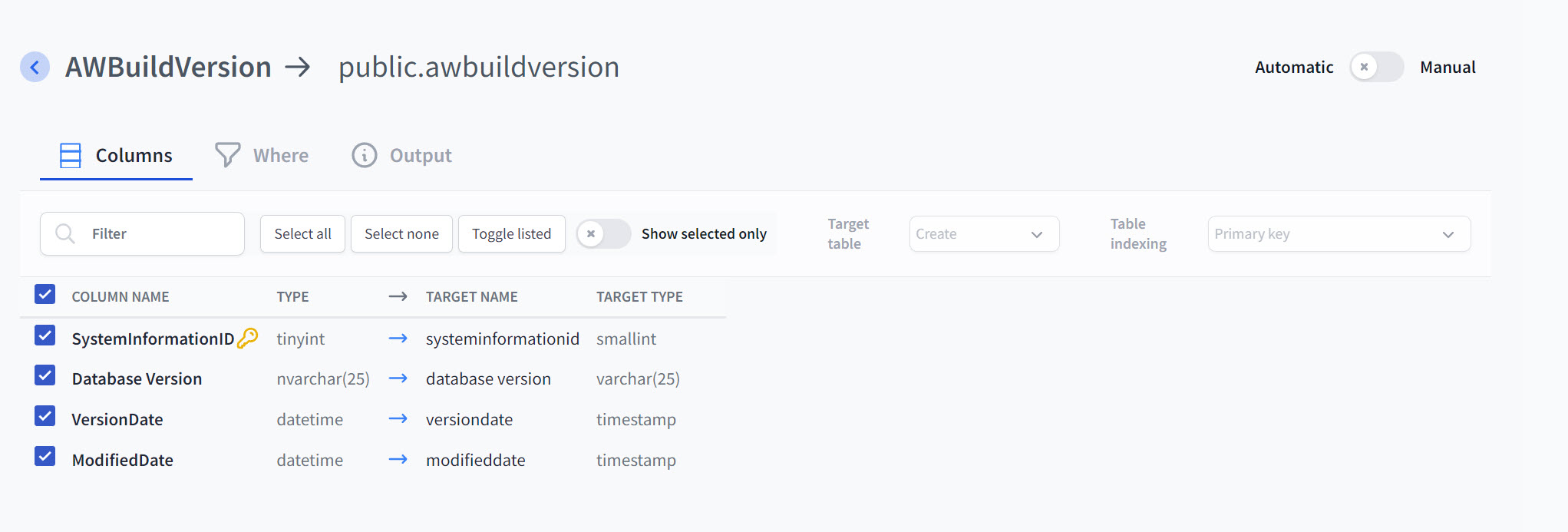Columns
Automatic mapping
Easily deselect columns you do not wish to migrate. Columns which are part of a primary key have a key icon next to the name.
Default schema mapping rules (as well as project options schema mapping if you have specified your overrides there) determining the target table name.
This screen shows all the source and target columns and the data types. Default data type mapping rules are applied when determining the target types. If you have customized data type mapping in the project options, those rules will be applied first.
If you wish to have full control over any specific table, you can turn on the manual mode instead.

Manual mapping
With manual mapping, you can directly specify table name, column names, data types, nullability, default values, collation.
You can also select if you wish this table to be created on the target, or we should expect the table to exist and just load data into it.
Manual mapping always overrides project options. What you specify here is final.
Column Name
Specifies the source column name
Type
Indicates the data type of the source column
Target Name
The new column name in the target database
Target Type
Data type of the target column
Precision
Number of digits/characters a column can hold
Scale
Number of digits to the right of the decimal point in a number
Not Null
Enforces a rule that the column cannot have NULL values
Incrementing
The column will auto-increment
Default Value
A default value for the column when no other value is specified
Collation
Determines how data is sorted and compared in the database

Last updated